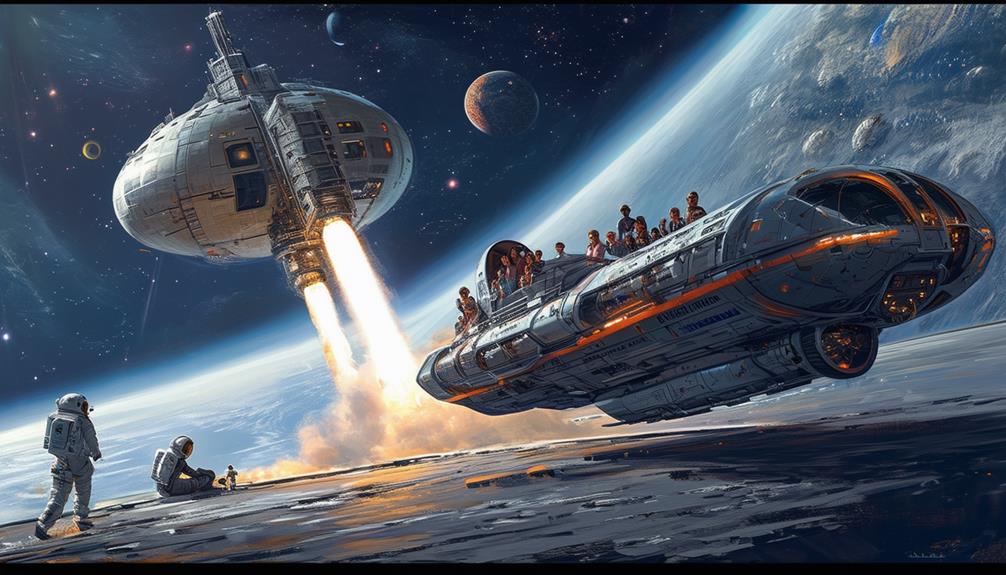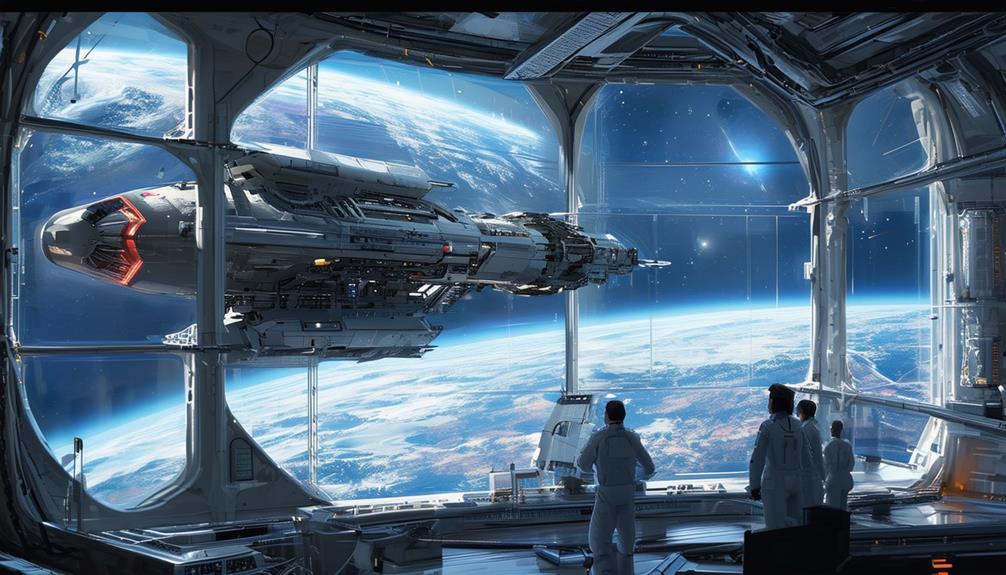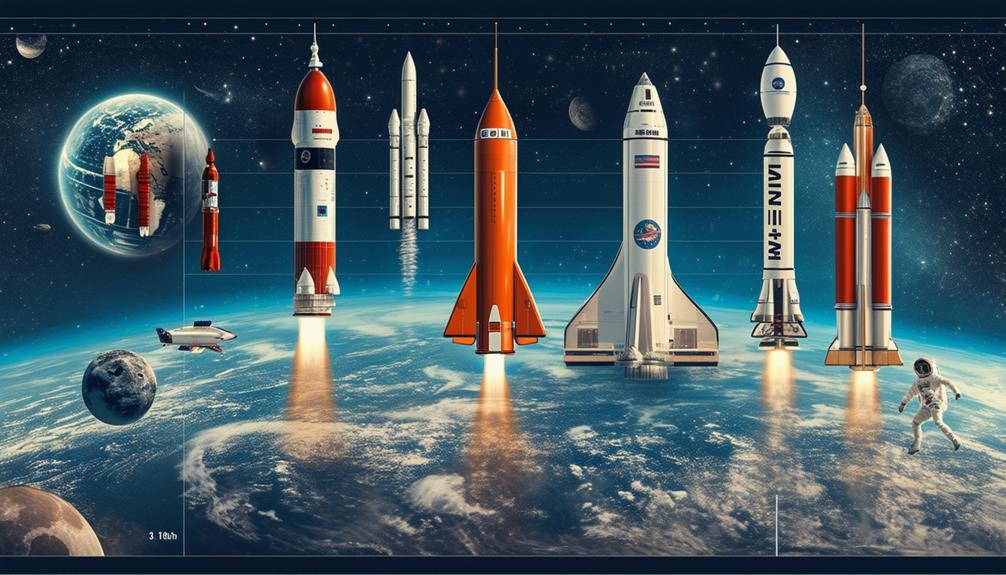The Role of Space Tourism in Advancing Space Exploration

Have you ever wondered how space tourism could shape the future of space exploration? When private companies invest in developing advanced spacecraft, their goal extends beyond sending tourists into orbit; they aim to push the boundaries of technology and safety. Collaborations with agencies like NASA can lead to significant advancements, making space travel more efficient and accessible.
The impact of these developments goes far beyond just the tourists. Curious about how this growing industry could influence public interest and inspire the next generation of pioneers? Let's explore its potential together.
Key Takeaways
- Increased Investment and Innovation: Space tourism catalyzes investment in cutting-edge technologies and infrastructure, thereby accelerating advancements in space exploration.
- Public Engagement and Inspiration: The advent of space tourism transforms public interest into active engagement, inspiring a new generation of space explorers.
- Private Sector Contributions: Companies like SpaceX and Blue Origin are instrumental in making space more accessible and sustainable through innovative spacecraft and cost-effective missions.
- Collaborative Research and Development: Collaboration between NASA and private entities enhances the development of safer and more efficient spacecraft and life support systems.
- Economic Growth in Low Earth Orbit: Space tourism promotes a thriving economy in low Earth orbit, encouraging profitable activities and continuous technological innovation.
Economic Impact

The burgeoning space tourism industry is poised to transform the global economy, with market projections skyrocketing from USD 695.1 million in 2022 to USD 8,669.2 million by 2030. This industry's economic impact will be substantial, generating new opportunities in commercial space ventures and redefining travel and tourism boundaries.
As space tourism expands, investments in infrastructure, technology, and services related to commercial space will surge. Leading the market, North America held a 38.6% share in 2022 and will remain a key player. The U.K. is also advancing significantly, heavily investing in spaceports to support future space tourism activities. This infrastructure expansion will create jobs, stimulate local economies, and drive innovation.
Additionally, the government end-user segment is projected to grow at a compound annual growth rate (CAGR) of 37% from 2022 to 2030, further amplifying the sector's economic impact. Currently, suborbital spaceflight, dominated by companies like Virgin Galactic and Blue Origin, leads the segment. However, orbital spaceflight is expected to grow swiftly at 41.0%, attracting more investments and propelling the commercial space market forward. This will solidify space tourism as a cornerstone of the global economy.
Technological Innovations
Amid the rise of space tourism, groundbreaking technological innovations are transforming commercial space travel. Pioneering companies like SpaceX, Blue Origin, and Virgin Galactic are developing advanced launch systems that are faster, safer, and more efficient. These advancements in spacecraft design are crucial for the success and sustainability of commercial space travel.
To illustrate, here's a table highlighting some key technological innovations:
| Technology | Impact |
|---|---|
| Advanced Propulsion | Faster and safer travel |
| Spacecraft Design | Improved safety and efficiency |
| Spaceports | Increased launch capacity |
Another significant innovation is the integration of AI and robotics, optimizing autonomous missions and enhancing operational efficiency and reliability. For instance, AI systems can manage spacecraft functions and handle unexpected challenges, while robotics can perform complex tasks autonomously.
Additionally, 3D printing is revolutionizing manufacturing processes. This technology enables on-demand production of components directly in space, reducing the need for costly shipments from Earth. These innovations are not only making space tourism viable but also paving the way for deeper space exploration in the future.
Private Sector Contributions

Cutting-edge technological advancements are driving space tourism, with private sector companies like SpaceX, Blue Origin, and Virgin Galactic leading this transformation. These companies significantly contribute to space exploration through innovative spacecraft development.
SpaceX, for example, has developed the Crew Dragon spacecraft, which ferries astronauts to the International Space Station (ISS). This not only supports space exploration but also showcases the private sector's capability to manage complex space missions.
Blue Origin, another trailblazer, has focused on operational reusability with its New Shepard spacecraft. By lowering spaceflight costs, Blue Origin is making space tourism more accessible and sustainable.
Virgin Galactic is also pushing boundaries with its SpaceShipTwo spaceplane, designed for suborbital spaceflights for civilians. This initiative expands opportunities for space exploration by allowing more people to experience space firsthand.
The private sector's investments and advancements are crucial in making space exploration more accessible and sustainable, highlighting their essential role in the future of space travel. Your journey to space is closer than ever, thanks to these pioneering companies.
Public Engagement
Engage directly in space exploration through space tourism, which offers activities beyond Earth's atmosphere. Programs like NASA's New ISS Commercial Use Policy provide opportunities to visit the International Space Station, fostering a deeper connection and understanding of space exploration. These unique and immersive experiences significantly enhance public engagement.
Imagine floating weightlessly in the ISS, witnessing breathtaking views of Earth from space. These experiences aren't only thrilling but also incredibly inspiring and educational. They provide firsthand insight into the challenges and wonders of space travel, sparking curiosity and enthusiasm. This direct involvement demystifies space exploration, making it more relatable and accessible.
Moreover, initiatives like NASA's LEO Commercialization Studies aim to bolster private sector collaborations, further advancing public participation in space activities. By engaging with space tourism, you become part of a broader narrative that promotes the importance of space exploration. Increased public interest supports future missions and innovations.
In essence, space tourism transforms passive observers into active participants, driving public engagement and inspiring a new generation to explore and appreciate the final frontier.
Research and Development

As space tourism gains momentum, the imperative for research and development in advanced spacecraft technology becomes increasingly evident. This R&D is crucial for ensuring the safety and reliability of commercial space travel. Companies like SpaceX, Blue Origin, and Virgin Galactic are spearheading this revolution, investing heavily in cutting-edge research to enhance space tourism experiences and expand the frontiers of space exploration.
A primary focus of these research efforts is the development of robust life support systems capable of sustaining humans during extended periods in space. These systems are essential not just for tourists' comfort but for their survival, addressing critical needs such as air supply, temperature control, and waste management.
Additionally, significant attention is being directed towards the development of space habitats. These habitats aim to provide safe, comfortable living environments for prolonged stays in space, thereby making space tourism more feasible and appealing.
Collaborations between industry leaders and research institutions are driving innovation in these domains, pushing the boundaries of what's possible in space travel. This advanced R&D strives to lower costs, enhance safety measures, and enable longer durations in space, benefiting both tourists and astronauts.
The progress achieved through these efforts is paving the way for a new era in space exploration.
Spacecraft Advancements
Spacecraft advancements are transforming space tourism by making it more accessible, affordable, and safe. With these technological leaps, space travel is no longer a distant dream but an emerging reality. SpaceX's Crew Dragon, for instance, has already set new standards by successfully ferrying astronauts to the International Space Station, demonstrating its reliability and safety. Meanwhile, Blue Origin's New Shepard focuses on reusability, significantly lowering the cost of spaceflight and making short trips to the edge of space more economical and frequent.
Virgin Galactic's SpaceShipTwo is designed specifically for suborbital space tourism, offering passengers the chance to experience weightlessness and view Earth from above. These spacecraft are not just engineering marvels; they are crucial steps toward making space tourism more accessible to a broader audience.
Here's a quick comparison of key spacecraft:
| Spacecraft | Key Feature | Purpose |
|---|---|---|
| Crew Dragon | ISS transport | Orbital missions |
| New Shepard | Reusability | Suborbital flights |
| SpaceShipTwo | Suborbital tourism | Space tourism experiences |
These advancements ensure that future space trips will be both exhilarating and safe, paving the way for broader space exploration and tourism.
Future Collaborations

Future collaborations between NASA and private companies are set to revolutionize space tourism and exploration, creating a vibrant economy in low Earth orbit (LEO). NASA is actively encouraging the growth of the space tourism industry by allocating 5% of crew resources and cargo capacity on the International Space Station (ISS) for commercial use. This initiative allows for-profit manufacturing and marketing activities, fostering private sector innovation in space.
NASA's strategy includes awarding proposals for the use of ISS docking ports to accelerate the development of viable habitats in LEO. This approach not only promotes a thriving space economy but also reduces NASA's operational costs, which currently range from $3 to $4 billion annually. Supporting up to two short-duration private astronaut missions to the ISS each year, NASA further stimulates commercial spaceflight and space tourism.
In the long term, NASA plans to become a customer of independent, commercial habitable destinations in LEO. This transition is expected to invigorate the space economy by creating new markets and opportunities for private companies. By partnering with the commercial sector, NASA aims to establish a sustainable framework for space exploration, enabling humanity to reach new frontiers with unprecedented efficiency and innovation.
Conclusion
Space tourism is more than just an exhilarating experience; it's a driving force for advancements in space exploration. It bolsters the economy, spurs technological innovations, and integrates the private sector into the space industry.
By engaging the public and promoting research and development, space tourism is reshaping our future. Through ongoing collaboration and advancements in spacecraft, we can expect even more groundbreaking achievements in the coming years.
The sky is no longer the limit!




